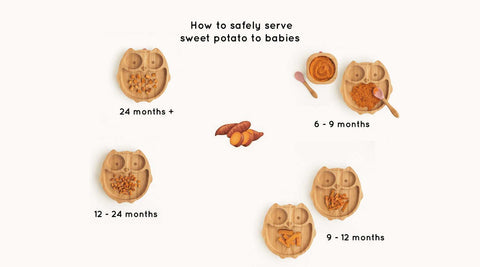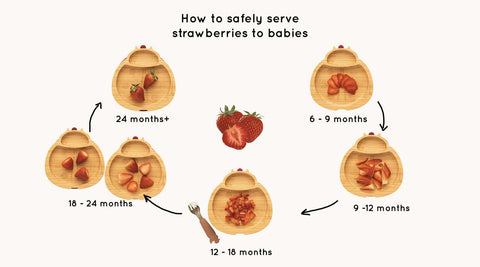Here at eco rascals, we believe in providing the best nutrition for your baby's weaning journey. Sweet potatoes are an excellent choice for introducing solid foods to your little one, whether you're following a traditional or baby-led weaning approach. In this guide, we'll explore why sweet potatoes are a fantastic first food and how to serve them at different stages of your baby's development.
Why feed sweet potato to your baby?
Whatever age you’re dishing up sweet potatoes, they’re a great way to add some nutrients to your child’s diet. They’re a great source of fibre, vitamins C and E, potassium, and beta-carotene – which converts into vitamin A. Plus, they have a naturally sweet taste that many little ones love, even in those early stages!
Age-Appropriate Ways to Serve Sweet Potatoes to Your Child
To help you decide the best way to serve sweet potato to your child, we’ve created a brief video breaking it down into stages.
6-9 months
When your little one begins their weaning journey, getting used to any kind of solid food is a huge step. Sweet potato is an excellent way to introduce solids to your baby, as it can be easily transformed into a consistency that’s much more suitable to their little palates.
Once your sweet potato is baked, you can either mash it up with a fork or potato masher, or blend it into a puree. That way, it’s super easy for either spoon feeding or for getting stuck in with little hands.
At this age, you may want to mix the sweet potato with another food to provide a more complex taste or an enhanced nutrient meal. Apple will make add a naturally sweet and tangy flavour. Banana will create a creamy puree. Avocado will create a rich and velvety taste and includes healthy fats.

9-12 months
After a few months of soft purees and mashed vegetables, your little one will move on to something a little sturdier. However, it’s important that you make sure the food is still soft for their little mouths.
At this age, cut your sweet potato into strips or wedges, and bake them until they’re soft enough to squish with your fingers.
12-24 months
Now that your baby is really starting to hone their weaning skills, you can take another step up in terms of texture and consistency. Remember, there’s still a risk of choking, so be wary of how big you chop your fruit and vegetables.
When serving your sweet potato to a child around this age, we recommend using your pinky finger as a measuring tool. Cut your little cubes into roughly the size of the fingernail on your little finger, bake, and serve!

24+ months
By around 2 years old, your child is probably ready for some slightly larger sweet potato cubes, baked in the same way as before. These versatile little veggies can be served on their own as a snack, or as part of a meal.
This is a great dish for encouraging your child to use cutlery. While it’s tempting to grab at the cubes with their hands, mastering the art of picking them up with a fork is a vital life skill.
Serving your baby's food on an eco rascals bamboo plate is not only a conscious choice for your child's well-being but also for the planet. Our bamboo plates are designed with your baby's safety in mind, as they are free from harmful chemicals like BPA and phthalates. They are naturally antimicrobial and hypoallergenic, ensuring a hygienic mealtime environment. Additionally, our bamboo plates are durable and long-lasting, making them a sustainable alternative to traditional plastic or disposable plates. By choosing eco rascals, you're making an eco-friendly choice that reduces waste and supports a healthier future for your child and the environment.
Disclaimer
You should always supervise your child when they’re eating.
The age ranges provided are a loose indication of the different stages your baby will go through when weaning, but every child is different. Your baby will show signs that they’re ready to take the next step. For example, if they’re struggling to chew the sweet potato, they may not be ready.




Comments (0)
There are no comments for this article. Be the first one to leave a message!